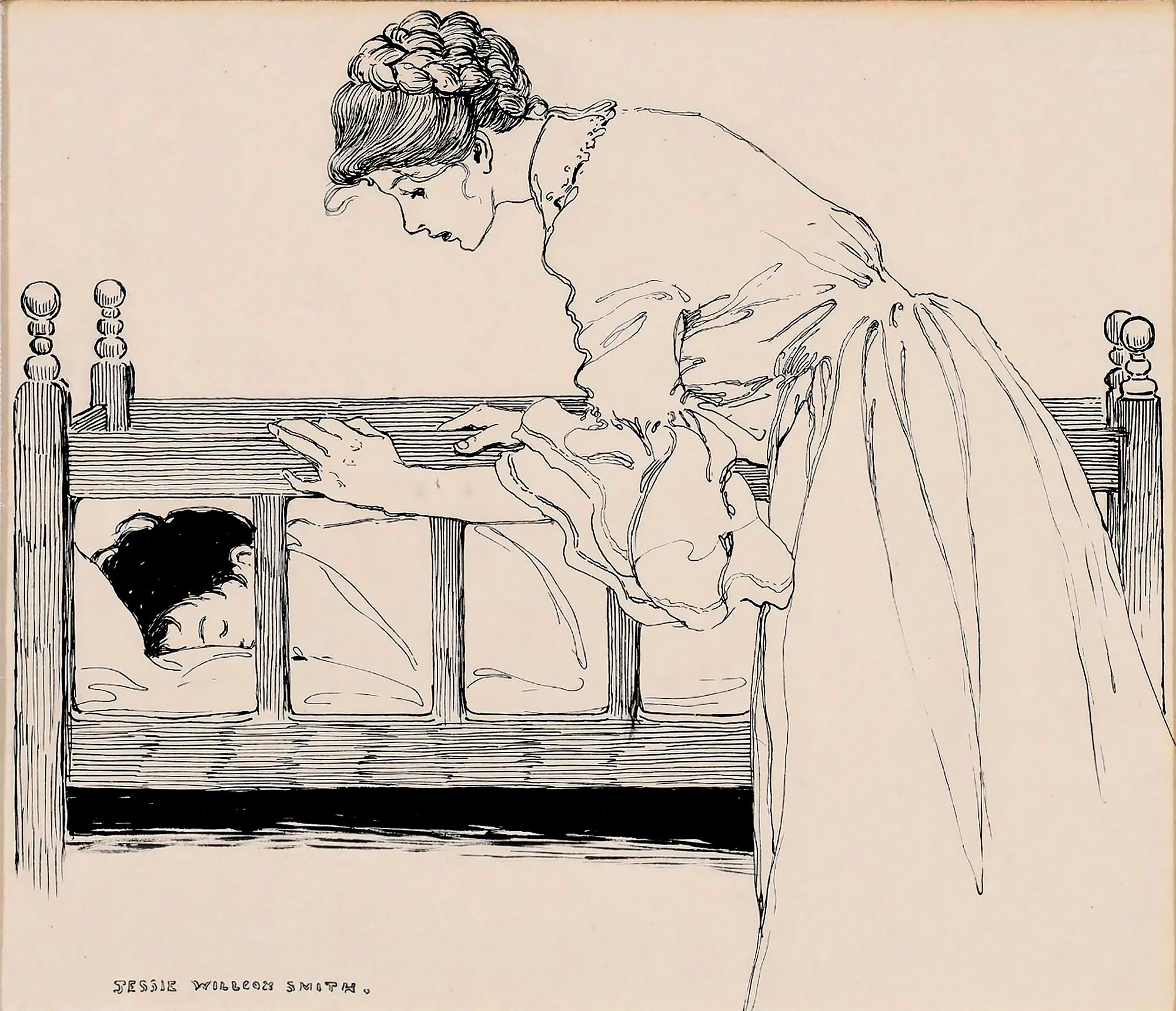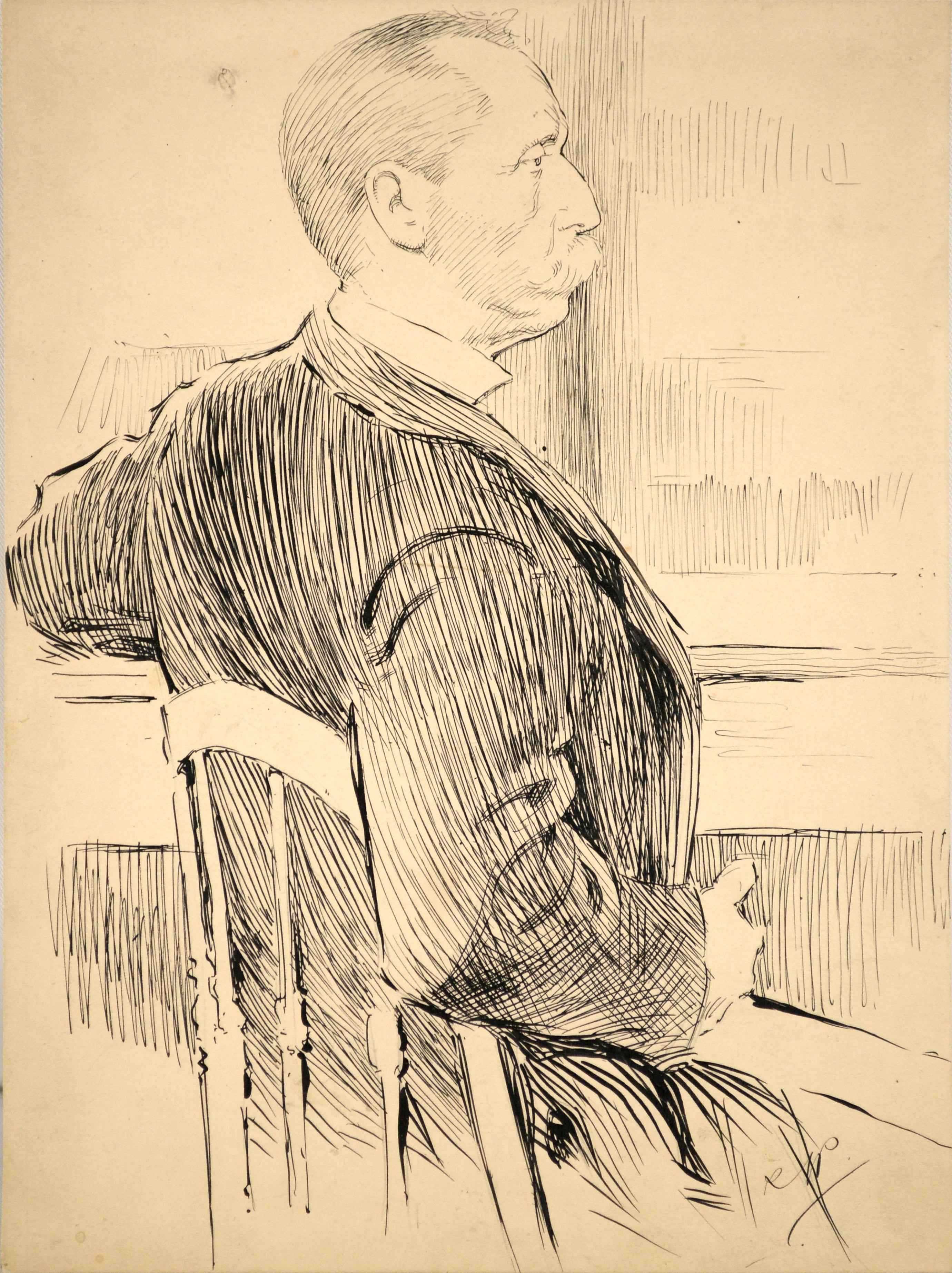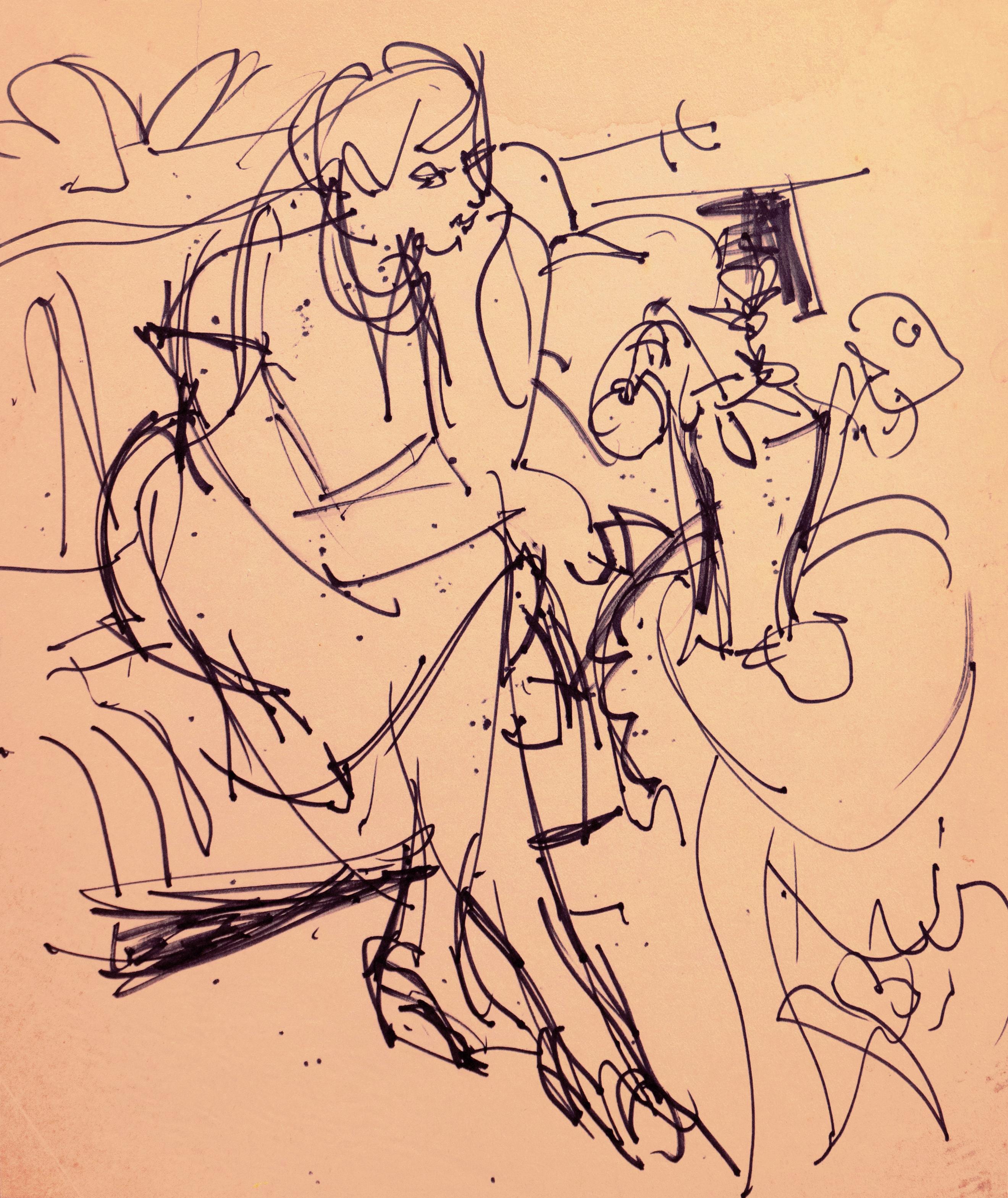Items Similar to Courting a Title
Want more images or videos?
Request additional images or videos from the seller
1 of 2
Alan MaverCourting a Title
About the Item
Medium: Pen and Ink on Illustration Board
Signature: Signed Lower Right
Contact for dimensions.
- Creator:Alan Maver
- Dimensions:Height: 1 in (2.54 cm)Width: 1 in (2.54 cm)
- Medium:
- Period:
- Condition:
- Gallery Location:Fort Washington, PA
- Reference Number:1stDibs: LU38436971852
About the Seller
5.0
Recognized Seller
These prestigious sellers are industry leaders and represent the highest echelon for item quality and design.
Established in 1995
1stDibs seller since 2016
106 sales on 1stDibs
Typical response time: 4 hours
- ShippingRetrieving quote...Ships From: Fort Washington, PA
- Return PolicyA return for this item may be initiated within 14 days of delivery.
More From This SellerView All
- Portrait of a Young GirlLocated in Fort Washington, PAMedium: Watercolor on Paper Signature: Signed Lower RightCategory
20th Century Figurative Drawings and Watercolors
MaterialsPaper, Watercolor
- Ginger Rogers, circa 1948By George WachsteterLocated in Fort Washington, PAMedium: Pen and Ink on Illustration Board Signature: Signed Lower Right This illustration is on 13.50" x 10.00" illustration board with a 8.00" x 5.00" image. Caricature by George Wachsteter (1911-2004) of Dancer & Actress Ginger Rogers...Category
1940s Portrait Drawings and Watercolors
MaterialsIllustration Board, Ink, Pen
- Zachary Scott & Musical Director, Harold Levey, (2)By George WachsteterLocated in Fort Washington, PAMedium: Pen and Ink on Illustration Board Signature: Signed Center Right and Lower Left This piece is on 15.00" x 11.00" illustration board, each drawing measuring to 7.00" x 9.00." Includes the original invoice. Minor soiling, editors notations. Caricatures by George Wachsteter (1911-2004) of Zachary Scott...Category
1940s Portrait Drawings and Watercolors
MaterialsInk, Illustration Board, Pen
- Playwright, George Bernard Shaw (2 Illustrations)By George WachsteterLocated in Fort Washington, PAMedium: Pen and Ink on Illustration Board Signature: Signed Lower Right and Center Date: 1951-52 These illustrations are on 10.50" x 9.00" and 8.25" x 7 .50" sized boards. The images measure to 4.00" x 3.25" and 5.00" x 4.00." Drawings by George Wachsteter (1911-2004) of Playwright George Bernard Shaw...Category
1950s Portrait Drawings and Watercolors
MaterialsInk, Illustration Board, Pen
- Alan Young, Circa Early 1950'sBy George WachsteterLocated in Fort Washington, PAMedium: Pen and Ink on Illustration Board Signature: Signed Lower Center Caricature by George Wachsteter (1911-2004) of Alan Young, circa early 1950s, possibly to promote the comedy-variety series, `The Alan Young Show` on CBS-TV (1950-53). His popularity with critics earned him various forms of praise such as `The Charlie...Category
1950s Portrait Drawings and Watercolors
MaterialsInk, Illustration Board, Pen
- Caricature for Jay Jostin from "Mr. District Attorney"By George WachsteterLocated in Fort Washington, PAMedium: Pen and Ink on Illustration Board Signature: Signed Upper Left 8.50" x 11.25" image on 14.00" x 11.00" board. Ink on Illustration Board of Jay Jostin from `Mr. District Att...Category
1950s Portrait Drawings and Watercolors
MaterialsInk, Illustration Board, Pen
You May Also Like
- Mother and Child, Golden Age of IllustrationBy Jessie Willcox SmithLocated in Miami, FLAmerica's greatest female illustrator draws a heartwarming picture of a mother putting to bed her child. Motherly love towards their children is the artist's most iconic theme. This ...Category
Early 1900s Art Nouveau Figurative Drawings and Watercolors
MaterialsInk, Illustration Board, Pen
- Abstract Silhouette Hat Portraits - Female Illustrator of Golden AgeBy Jessie GillespieLocated in Miami, FL115 years after they were created, one can view these silhouettes differently than the artist’s intent. After all, the genesis of this work was an editorial illustration for Life Magazine to showcase elaborate women’s hats. They were done for a commercial assignment with a deadline, and picky editors were overseeing the final work. Today, they have a dual meaning. These charming silhouettes are abstractions as much as they are representations. Moreover, each one is a compact little gem stuffed with observational detail. Golden Age female illustrator Jesse Gillespie's mastery of technical skill, is apparent in minute details and composition. Young women, old women, pendants, necklaces, feathers, and laced vails all contribute to the works understated complexity. The identity of the subjects are revealed by small areas of exposed neck and chin. As the viewers eyes goes from left to right - all six silhouettes read as fashion hieroglyphs in a sentence with a visual rhythm and cadence. . Initialed JG lower right., Matted but not framed. Published: Life Magazine, March 17th, 1910. Provenance: Honey and Wax Bookstore ________________________________ From Wikipedia, the free encyclopedia Jessie Gillespie Willing (March 28, 1888 – August 1, 1972) was an American illustrator during the Golden Age of illustration. She was considered the foremost silhouette illustrator of her time, although she did traditional illustration as well. Willing illustrated for books and magazines including Life, The Ladies' Home Journal, Woman's Home Companion, Mother and Child, McClure's Magazine, Childhood Education, the Sunday Magazine, Association Men (the magazine of the YMCA), Farm and Fireside, Every Week, Children: The Magazine for Parents (which became Parents Magazine), and the American Magazine. She is perhaps most well known for her work for the Girl Scouts. Early life Willing was born in Brooklyn on March 28, 1888 to John Thomson Willing (August 4, 1860 – July 8, 1947)[1][2] and Charlotte Elizabeth Van Der Veer Willing (December 1, 1859 – March 4, 1930).[3] Thomson Willing was a noted illustrator and art editor. He was also well known for finding new artistic talent. Jessie Willing was the eldest of three children. Her brother Van Der Veer (November 30, 1889 – January 14, 1919), who died of pneumonia at the age of 29, was an advertising agent.[4] Her sister Elizabeth Hunnewell Willing (July 26, 1908 – August 15, 1991) was one of the first women to graduate from the Philadelphia Divinity School.[5][6] Elizabeth married the Rev. Orrin Judd, rector of St. Mary's Episcopal Church, on September 22, 1931, and was active in church work.[citation needed] The Willing family moved to the Germantown neighborhood of Philadelphia in 1901 or 1902. Jessie Willing attended the Stevens School, from which she graduated in 1905. She then went on to attend the Philadelphia Academy of Fine Arts from 1906 to 1907.[7][8] Career Willing used her middle name Gillespie as her professional surname. She also often signed her illustrations J.G.[9] The story goes that the art editor of Life magazine was in Thomson Willing's office when he was the art editor of the Associated Sunday Magazine syndicate. Thomson Willing had some of Jessie's artwork on his desk, which the Life editor saw and admired. He asked for the artist's information so that he could give her freelance work. Thomson Willing did not want to be accused of nepotism so he persuaded Jessie to use Jessie Gillespie as her professional name, which she did.[10][11] In addition to her extensive illustration work, Willing was also the editor of Heirlooms and Masterpieces from 1922 to 1931 and the art editor of Jewelers' Circular-Keystone from 1933 to 1939.[12] She specialized in jewelry publicity and advertising. In 1966 she won the Gold medal of the Printing Week Graphic Arts Exhibit in Philadelphia for her Christmas catalog for J.E. Caldwell Co., Philadelphia. Willing was a member of the Plastic Club of Philadelphia,[13] the American Institute of Graphic Arts (AIGA) and the National Arts Club of New York.[14] She was an honorary life member of the National Arts Club[15] and served on its Board of Governors from 1941-1970. In 1963, she received the Gold Medal of the National Arts Club in recognition of 32 years of selfless devotion.[15] Additionally, she was the national director of the American Institute of Graphic Arts (AIGA) from 1943 to 1946.[15] Previous to this she served as the Program Chairman of the AIGA and in that position she put together a travelling exhibit on the "history of narrative art from the first recorded picture story to the comic book of the twentieth century."[16][17] Illustrations in books With Tongue and Pen--Frederick Bair, et al. (MacMillan, 1940) Masoud the Bedouin--Alfred Post Carhart (Missionary Education Movement, 1915) The Path of the Gopatis--Zilpha Carruthers (National Dairy Council, 1926) The Schoolmaster and His Son: A Narrative of the Thirty Years War--Karl Heinrich Caspari (Lutheran Publication Society, 1917) On a Rainy Day--Dorothy Canfield Fisher and Sarah Scott Fisher (A.S. Barnes and Co., 1938) Book of Games for Home, School and Playground--William B. Forbush and Harry R Allen...Category
1910s Victorian Portrait Drawings and Watercolors
MaterialsInk, Illustration Board, Pen
- 19th C. Newspaper Illustration of Hiram H. Hobbs, Foreman of the Grand Jury 1898Located in Soquel, CAHistorical late 19th century portrait of Hiram H. Hobbs, Foreman of the Grand Jury of San Francisco y Richard Langtry Partington (American, ...Category
1890s American Impressionist Portrait Drawings and Watercolors
MaterialsIndia Ink, Illustration Board
- 'Woman Seated', Paris, Louvre, Salon d'Automne, Académie Chaumière, LACMA, SFAABy Victor Di GesuLocated in Santa Cruz, CAStamped, verso, with estate stamp and estate wax seal for Victor Di Gesu (American, 1914-1988) and created circa 1955 Winner of the Prix Othon Friesz, Victor di Gesu first attended ...Category
1950s Post-Impressionist Figurative Drawings and Watercolors
MaterialsBoard, Paper, Ink, Pen
- Apocalypse, Catastrophic Destruction of the World, Surrealism - Life MagazineLocated in Miami, FLApocalypse in 1962? At the height of the Cold War, Life Magazine commissions an illustration that describes the world's end by means other than a nuclear war with Russia. Richard Erdoes brilliantly illustrates the work with his highly stylized painting technique. My favorite part of the work is on the left side showing a group of people packed together as they fall into oblivion. A clear reference would be Hieronymus Bosch's "The Last Judgment " Once Again the World Ends." Illustration published in Life Magazine, Feb. 9, 1962 Signed in lower right image. Unframed Richard Erdoes (Hungarian Erdős, German Erdös; July 7, 1912 – July 16, 2008) was an American artist, photographer, illustrator and author. Early life Erdoes was born in Frankfurt,[1] to Maria Josefa Schrom on July 7, 1912. His father, Richárd Erdős Sr., was a Jewish Hungarian opera singer who had died a few weeks earlier in Budapest on June 9, 1912.[2] After his birth, his mother lived with her sister, the Viennese actress Leopoldine ("Poldi") Sangora,[3] He described himself as "equal parts Austrian, Hungarian and German, as well as equal parts Catholic, Protestant and Jew..."[4] Career He was a student at the Berlin Academy of Art in 1933, when Adolf Hitler came to power. He was involved in a small underground paper where he published anti-Hitler political cartoons which attracted the attention of the Nazi regime. He fled Germany with a price on his head. Back in Vienna, he continued his training at the Kunstgewerbeschule, now the University of Applied Arts, Vienna.[5] He also wrote and illustrated children's books and worked as a caricaturist for Tag and Stunde, anti-Nazi newspapers. After the Anschluss of Austria in 1938 he fled again, first to Paris, where he studied at the Academie de la Grande Chaumiere, and then London, England before journeying to the United States. He married his first wife, fellow artist Elsie Schulhof (d. xxxx) in London, shortly before their arrival in New York City. In New York City, Erdoes enjoyed a long career as a commercial artist, and was known for his highly detailed, whimsical drawings. He created illustrations for such magazines as Stage, Fortune, Pageant, Gourmet, Harper's Bazaar, Sports Illustrated, The New York Times, Time, National Geographic and Life Magazine, where he met his second wife, Jean Sternbergh (d. 1995) who was an art director there. The couple married in 1951 and had three children.[6] Erdoes also illustrated many children's books. An assignment for Life in 1967 took Erdoes to the Pine Ridge Indian Reservation for the first time, and marked the beginning of the work for which he would be best known. Erdoes was fascinated by Native American culture, outraged at the conditions on the reservation and deeply moved by the Civil Rights Movement that was raging at the time. He wrote histories, collections of Native American stories...Category
1960s Surrealist Figurative Drawings and Watercolors
MaterialsMixed Media, Illustration Board, Board, Gouache
- Portrait of George Arliss in Conte Crayon on Cardstock 1934Located in Soquel, CAStately portrait of George Arliss by Ivan Opffer (Danish, 1897-1980). Mr. Arliss is depicted wearing his signature monocle, looking directly at the viewer. Although this piece appears to be done rapidly, there is a clear confidence in Opffer's work - he was an accomplished portrait artist - and the resemblance to the subject is unmistakable. George Arliss (born Augustus George Andrews; 10 April 1868 – 5 February 1946) was an English actor, author, playwright, and filmmaker who found success in the United States. He was the first British actor to win an Academy Award – which he won for his performance as Victorian-era British prime minister Benjamin Disraeli in Disraeli (1929) – as well as the earliest-born actor to win the honour. He specialized in successful biopics, such as Disraeli, Voltaire (1933), and Cardinal Richelieu (1935), as well as light comedies, which included The Millionaire (1931) and A Successful Calamity (1932). Signed and dated "Ivan Opffer 1934" in the lower right. Titled "Mr. Arliss" in the lower left. Presented in a new off-white mat with foamcore backing. Mat size: 22"H x 16"W Art size: 17.5"H x 12"W Ivan Opffer (Danish, 1897-1980) was born in Nyborg, Denmark, on June 4, 1897, to a family of Danish scholars and journalists. His brother was Emil Opffer, a Danish merchant seaman and journalist who was known for his relationship with American writer Hart Crane. Ivan was raised in Mexico City and New York, where his anarchist father was the editor of a radical Danish-language newspaper. His involvement in painting and drawing began at an early age. At a summer workshop, he met and studied drawing with Winslow Homer, then went on to study at the National Academy of Design and the Art Students League of New York. When the US entered World War I, Opffer was one of the members of the American Army Camouflage Corps, headed by Homer Saint-Gaudens (whose mother was a relative of Winslow Homer), the son of Augustus Saint-Gaudens. As a camoufleur, Opffer served with other artists and architects, some of whom became well-known, including Barry Faulkner, Sherry Edmundson Fry, Kimon Nicolaides, Robert Lawson, Abraham Rattner, Kerr Eby, and others. It was this same unit, while still in training in at Camp American University in Washington DC, that launched a camp newspaper called The Camoufleur. Only three issues were published before the unit’s deployment to France in late 1917. In the October 31 issue, a satirical portrait by Opffer of Homer Saint-Gaudens (titled “Our Boss”) was published on page 5. After the war, Opffer returned to New York, where he became known for his caricatures of leading Modern writers, among them James Joyce, Edgar Lee Masters, Siegfried Sassoon, George Bernard Shaw, Carl Sandburg, G.K. Chesterton, and Thomas Mann. In the years between the wars, Opffer married Betty à Beckett Chomley, and settled in Paris, where he was a student at the Academie Julliard. He also lived in London and Copenhagen, where his drawings were frequently published in newspapers and magazines. With the outbreak of World War II, he and his family returned to New York and lived in Greenwich Village. Among his friends in that era were William Butler Yeats, F. Scott and Zelda Fitzgerald...Category
1930s American Impressionist Portrait Drawings and Watercolors
MaterialsConté, Postcard, Illustration Board





